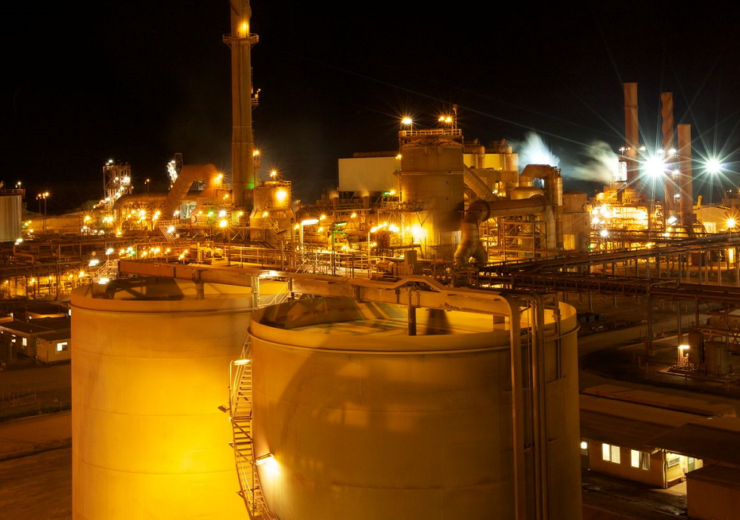The World Bank estimates production of critical minerals used in the clean energy transition will increase 500% by 2050 to meet demand for new technologies

Glencore's Murrin Murrin cobalt and nickel project in Australia (Credit: Glencore)
Production of the critical minerals used in clean energy technologies could grow almost 500% by 2050 according to the World Bank.
With the global energy industry poised to undergo a huge transition to low-carbon technologies, the demand for commodities such as lithium, cobalt and graphite – key ingredients in solar, wind and battery storage components – is primed to skyrocket.
The international lender estimates more than three billion tonnes of these materials will need to be pulled from the ground to keep pace with the expected growth in renewable power, as economies and industries set new ambitions to achieve carbon neutrality in line with the Paris Agreement.
Low-carbon transition will drive demand for minerals used in clean energy
Despite the challenges currently presented by coronavirus, which have disrupted energy sectors and slowed some mining activity as a result of global lockdown measures and demand shocks, the financial institution suggests resource-rich developing economies hard-hit by the pandemic’s financial impact will be able to benefit from the impending demand surge.
Its latest report highlights the need, however, for governments and corporate institutions to follow sustainable principles – a “radically-different, climate-smart approach” – when producing these key minerals, to avoid amplifying emissions when sourcing the ingredients for low-carbon technologies.
World Bank director for energy and extractive industries Riccardo Puliti said: “Ambitious climate action will bring significant demand for minerals. Limiting global warming to at or below 1.5C to 2C, to realise a low-carbon future, requires a large-scale transition to clean energy.
“Manufacturing solar panels, wind turbines, and batteries will shape the supply and demand for critical minerals for the foreseeable future. Doing so will have significant implications for a wide variety of industries and for mineral-rich developing countries.
“These countries stand to benefit from the rise in demand for minerals but also need to manage the material and climate footprints associated with increased mining activities.”
Materials recycling will play an important role
While production levels of these minerals needed to support the clean energy transition will need to be scaled up dramatically over the coming decades, the World Bank also recommends greater focus on recycling and reuse of metals such as copper and aluminium.
Doing so will form a “vital” part of the transition and keeping the carbon footprint of future mineral extraction to a minimum, although policy measures will be needed to incentivise more action in this area.
The report states: “Future increases in recycling rates can play an important role in mitigating increases in demand for raw materials, as can reuse of components for energy storage technologies, such as lithium-ion batteries, and refurbishment of equipment, such as wind turbines.”
Critical mineral demand can boost developing economies after Covid-19, but sustainability must be a priority
Many of these sought-after minerals are deposited in regions with developing economies, such as Africa and South America – places where the mining industry has had a sometimes-chequered relationship with environmental standards.
Numerous global initiatives have made efforts to promote greater transparency and social responsibility in places where strict government regulations are sometimes lacking, and the World Bank report recommends renewed emphasis on sustainability issues as these regions emerge from the pandemic looking to generate revenues from their mineral wealth.
Puliti said: “Covid-19 could represent an additional risk to sustainable mining, making the commitment of governments and companies to climate-smart practices more important than ever before.”
And according to the Minerals for Climate Action report: “Limiting greenhouse gas emissions throughout the clean energy technology supply chain could offer double wins, helping boost economic growth as well as reducing climate and environmental risks in resource-rich developing countries that are positioned to supply these minerals.
“If, however, the mitigation of emissions and other potentially-harmful environmental and social effects are not achieved from increased mineral production, there is a risk that clean energy technologies may not maintain the same level of support they have today for climate action.
“It is vital that the production and disposal of these technologies do not come at the expense of people and the environment.”
